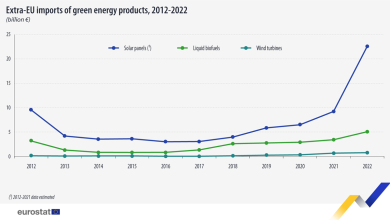Offshore Wind Law
Specific Elements. Similarities with the Offshore Petroleum Field
The Romanian so-long awaited offshore wind draft law is (at the time of preparing this material) under public consultation (the “Offshore Wind Draft”). While offshore wind has already taken off in Poland and the Baltic Sea Nordic countries, putting in place the right framework could unleash synergies that might enable Romania to become one of the largest energy exporters in Europe!
From an energy perspective, Romania’s contiguous maritime area within the Black Sea is an exceptional asset not sufficiently exploited. Apart from the shallow water petroleum exploitation of OMV Petrom (since 1987) and the BSOG’s gas production (started June 2022), there are no active exploitations of the huge energy potential the Black Sea offers. The Neptun Deep offshore petroleum block (with the February 2012 Domino 1 gas discovery) seems to have finally entered on a straight line, but we are still a few years apart from the first gas molecule reaching onshore NTS (maybe 2027?). As such, offshore wind (with a potential estimated by the World Bank at 76 GW – study available at https://lnkd.in/e2gtTbVe) might add substantial sustainable economic and social benefits.
MAIN PROVISIONS OF THE DRAFT
It is, by no means, a substantially improved draft compared to the one released a few years ago. Similar to the previous draft, many of the provisions of Law no 238/2004 (the Petroleum Law) and Law no 256/2018 (the law on Offshore Petroleum Operations) are reflected into the Offshore Wind Draft. For those familiar with the offshore petroleum field, it seems only normal given the extensive similarity between the two activities (as below detailed).
Some 10 years ago, when the first steps were taken by the (then) ExxonMobil/OMV Petrom JV towards preparing the Neptun Deep business case, some basic regulatory questions were raised such as (i) based on what right will the beach (i.e. State property) be crossed by the pipeline bringing the gas onshore or (ii) which was the competent authority to issue the construction permit for the offshore platform etc. In the meantime, these issues were solved as the Law on Offshore Petroleum Operations and ACROPO (i.e., the Competent Authority to Regulate Offshore Petroleum Operations) was set up.
The Draft Offshore Wind Law sets forth:
Permitting relevant provisions
- ACROPO is designated as the competent authority to issue the construction/demolishing permit(s) for the offshore wind power plants; ATR will be issued by Transelectrica and the production license will be issued by ANRE;
- The Ministry of Energy will organize the bidding rounds for awarding the offshore wind perimeters and will enter (on behalf of the State) into the concession agreement.
As such, while ACROPO’s sphere of authority will be extended (from petroleum operations to wind related activities) it is clear that the intent was not to extend the sphere of authority of National Agency for Mineral Resources (i.e., the competent authority organizing petroleum bidding rounds) to offshore wind.
- A support scheme through a Contract for Difference scheme is envisaged. Within the context of the PV and onshore wind tender(s) announced a few days ago soon to be launched (i.e., September 2023), the CfD scheme for offshore wind was moreover expected. The Draft refers to a CfD scheme for 3 GW until 2035, which seems rather a realistic figure.
- A timeframe for the necessary steps towards awarding the first concession agreement. We really appreciate the intent to set firm/clear dates for such steps [to avoid situations like the one of the next – eleventh – bidding round for the concession of petroleum offshore perimeters which is expected for 13 years (!!!)].
Exploration phase
- Unlike the petroleum field, bidding rounds will be organized for exploration only [according to the public procurement (PP) rules]. Once exploration phase is completed, one must move into the development and construction phase. However, the Draft contains a peculiar mechanism allowing the State to refuse granting a development and exploitation concession to the holder of the exploration permit. In such case, the exploration titleholder will receive compensations – which will be limited upfront by the Ministry of Energy [as per Art 17(5)]. By reference to the petroleum field experience(s) (e.g., for Neptun Deep the exploration took 15 years, which is an unusually long period even for the complex deep offshore petroleum) we believe such a mechanism would not encourage deployment of substantial resources during exploration. Maybe the offshore wind exploration is not yet as complex as the petroleum deep offshore yet but limiting the titleholder in its exploration effort and allowing the State to refuse granting the exploitation rights, might determine a rather reluctant attitude on the investors in using latest technologies and fully engaging in assessing the whole potential of the respective perimeter during exploration.
- An exploration permits valid for 2 years (with one year extension) will be granted; the concession royalty during exploration is set per sq.km. All data resulted from the exploration phase belong to the Romanian State (which is normal practice internationally). However, we hope that the classified information regime will not be applicable to the offshore wind data (as in the petroleum field) – one of the key concerns (and limiting factor) of the petroleum investors.
Construction and exploitation phase
- Bidding rounds for exploitation phase will be organized (according to PP rules). The exploration titleholder will benefit from a pre-emption right (art 24 para 9). It should be regulated that the pre-emption right must be exercised before the bidding round itself, otherwise the competitive process might be negatively impacted (e.g., one would expect not so many participants as any investor will lose if the exploration titleholder exercises its pre-emption right – so, one might ask upfront “why bother participating?”).
- Several provisions are copy-pasted from the Petroleum Law potentially giving rise to the same issues seen in practice. For example, the onshore access rights are regulated identically under Art 6 of the Petroleum Law and under art 42 of the Draft; neither in the Wind Offshore Draft there is no “public utility” recognition enabling the investor to get the necessary access on private lands…The Draft also contains several useful criteria (Art 46) set for computing the level of compensation to a landowner which will help avoiding some of the litigations we’ve seen in practice in the petroleum sector.
- Concession costs to be paid to the Romanian State are twofold: a tax per sq.km (unseen in the petroleum field and commercially not making any sense!) and the annual royalty of 1% of the production value (due following the putting into function of the wind plant – which must take place within the first 7 years). For the underwater connecting cable(s) there will also be a tax per sq.(k)m which is paid as of the development phase.
Concession agreement
- The exploitation concession agreement is valid for 30 years and may be extended for several 10-year periods [art 27(4)]. Within the petroleum realm, the extension of the concession agreements is not legally mandatory (will is highly relevant for investors seeking to enter the concession at a later moment); so, it might not hurt to set the criteria/conditions to be met for extending the offshore wind concessions as of now. It is set only that in case of revamping the power plant, another 30-year extension may be granted.
- Assignment of the concession agreement [art 28(1)] can be made only with prior Ministry of Energy’s approval (similar to the petroleum field before February 2020 when only the NAMR’s President approval was sufficient; currently, assignment can be made only with the Romanian Government’s approval). The Ministry may refuse to grant approval based on national security reasons. Many did not see well such ability, when it was first introduced in February 2020 in the Petroleum Law; however, we are involved currently in such an assignment procedure, and we have not seen any sign of abusive interpretations on the Romanian authorities.
- It would be recommendable to replicate the provisions from Art 34(5) of the Petroleum Law regarding approval of change of control over the SPV holding the concession right (i.e., such case should also be subject to Ministry’s approval).
Titleholders
- (Romanian and) Foreign companies can hold wind offshore concessions. Same like in the petroleum field, foreign investors will have to set up a local representative office (fiscally registered within Romania).
- The provisions from (articles 24 and 25 of) the Offshore Petroleum Law regarding protection of local content (and support of the Romanian economic environment) are copy pasted.
CONCLUSIONS
Romania is not in pole position when it comes to putting in place regulatory frameworks for new technologies. This is not automatically a bad thing, as learnings can be extracted from others. However, the offshore wind law comes too late (our neighbours in the region have adopted the equivalent framework a while ago). The current Draft is an amendment of the previous draft and contains a number of obvious improvements; however, we believe there are several elements that should be still amended (even removed). We salute the authorities’ intention to adopt it within the autumn parliamentary session and hope for this to happen as it will surely release a wave of interest from large private investors in Romania.







